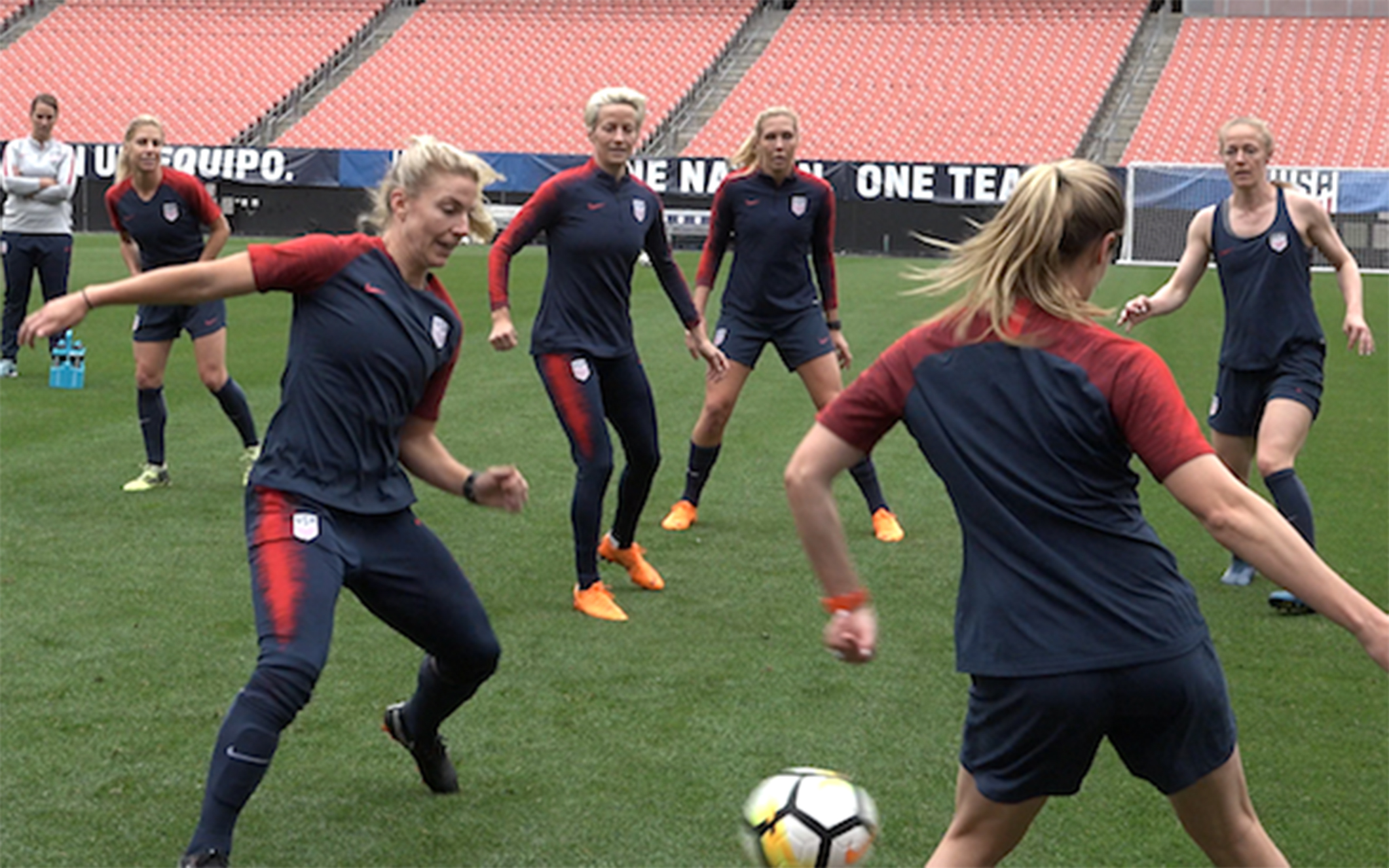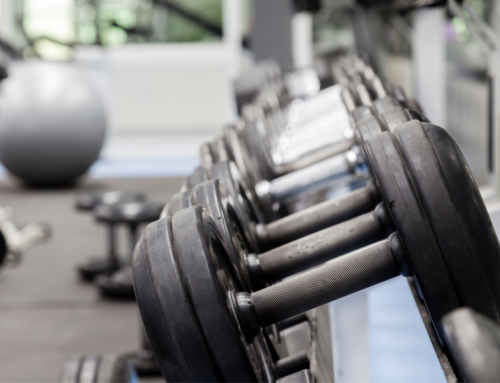The U.S. Women’s National Soccer Team Drill You Should Know
The United States Women’s National Soccer team is inspiring to watch. The creativity and precision they display with their passes is a big reason they’re the most dominant force in world soccer.
These dazzling skills are built in part by a game that closely resembles Monkey in the Middle. During a USWNT practice last summer, STACK saw them spend a considerable amount of practice time on the drill seen in the video player above.
The more I watched this seemingly simple drill, the more potential benefits I saw. By the time I left the field, I was convinced it should become a staple for soccer teams of all ages.
The drill consists of:
- 6-8 players standing in an evenly-spaced circle
- 1-2 players in the middle of the circle acting as defenders
- One soccer ball
- The goal is for the players in the circle to pass the ball around and keep it away from the defender or defenders as long as possible
- When a defender breaks up a pass or steals the ball, the round is over. The player responsible for giving the ball up must be a defender during the next round
- To further incentivize the game, if the circle reaches a predetermined number of passes, the defender(s) must perform a set of Push-Ups. If the defender(s) steal the ball or break-up the pass before the circle reaches that number, every player in the circle must perform a set of Push-Ups
All of these variables can be adjusted depending on factors such as number of players involved, skill level, age, fitness, etc., but the heart of the game is essentially a circular version of Monkey in the Middle. In Spain, this type of training game is known as a “Rondo”.
What exactly makes this game such a productive form of practice?
Let’s start with the obvious. For the players in the circle, it helps them train their short-to-medium passing skills under pressure. They practice playing passes in a variety of directions and with varying degrees of loft and speed. They also learn how to best receive all of these types of passes under pressure while simultaneously analyzing their surroundings to find open teammates. For the defenders, they practice closing out on ball-handlers and forcing them into poor touches. They also work on their timing for intercepting or disrupting passes. If there are two or more defenders in the middle, they train the ability to double-team ball-handlers and leverage each other’s positioning.
These are the essential skills of soccer. A 2017 study from the University of Queensland found that a player’s skill—more so than their speed, strength, size or fitness—was the best predictor of in-game performance. “Accurate passing and greater ball control are more important for success than high speed, strength and fitness,” lead author Professor Robbie Wilson told ScienceDaily.
The drill also encourages something that’s sorely lacking in American youth soccer—creativity. The pressure applied by the defenders forces players to think on their feet and find innovative ways to deliver the ball to their teammates. For the USWNT, this manifests as passing the ball with both feet, using various parts of the foot to deliver passes, utilizing feints prior to passes, manipulating defenders with their eyes before delivering passes, etc. This sort of creative practice is invaluable for players of all ages and skill levels. The beauty of the drill is that it dynamically adjusts to the players involved. The bigger and smarter the defenders are, the more precise and creative the players in the circle need to be. And if the game seems too elementary for the passers, additional defenders can be added, the number of offensive players can be reduced, and/or the diameters of the playing area can be reduced.
Rondos form the basis of FC Barcelona’s youth program. They often use a variation where if a passer is responsible for losing possession, they must switch spots with a defender.
“Our (youth) model was imposed by [Johan] Cruyff; it’s an Ajax model. It’s all about rondos,” Xavi, the legendary Spanish midfielder who was a product of Barcelona’s youth system, told The Guardian in 2011. “Rondo, rondo, rondo. Every. Single. Day. It’s the best exercise there is. You learn responsibility and not to lose the ball. If you lose the ball, you go in the middle.” The drills remain a staple even for the senior team:
Perhaps most importantly, the drill is fun. Those Barcelona players in the above video are having above. Many of the USWNT players sported gigantic smiles as they worked to outsmart and outmaneuver their opponent. Achieving the desired number of passes elicited hearty cheers from the players in the circle, while preventing the feat elicited spirited fist-pumps from the defenders. These are women who’ve spent thousands of hours playing and practicing the sport, yet they seemed truly engaged and enamored with this simple game. The coaching staff didn’t meddle in the drill, allowing the players to play freely. This further encourages creativity and experimentation and enhances enjoyment.
This simple game achieves three things that many American youth soccer players do not get enough of. It enhances the player’s skills under pressure, it breeds creativity, and it gives them a chance to have fun. This builds confidence and competency on both sides of the ball. It achieves all this with nothing more than one soccer ball, a handful of players, and a little bit of open space.
“Coaches can often be more helpful to a young player’s development by organizing less, saying less and allowing the players to do more. Set up a game and let the kids play. Keep most of your comments for before and after practice and during water breaks,” reads the U.S. Soccer pamphlet Best Practices for Coaching Soccer in the United States. “Kids need to be allowed to play freely, develop their skills and use them in a creative manner.”
The more we can allow youth players to develop these three attributes, the better. Scrimmages and small-sided games should also play a big role in the youth coach’s practice plan, as they progress this type of drill into a more realistic setting and require greater amounts of overall fitness.
Original Article posted on stack.com
Did you enjoy this article, ‘The U.S. Women’s National Soccer Team Drill You Should Know’? If so, check out more of our articles HERE.





